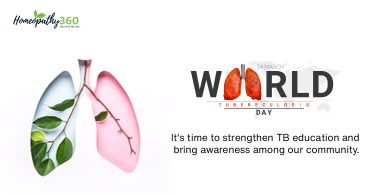
Introduction
One of the most prevalent medical conditions in children is allergic rhinitis, which is caused by an aberrant tissue reaction to an allergen, which is typically a protein. A particular antibody is produced as a result of this reaction.
A particular antibody is formed as a result of this reaction. Along with these aberrant antibodies, allergic individuals also create a unique type of antibody that is fixed in the tissue cells of the bronchial and nasal mucosa. When the antigen is first introduced, it reacts with these tissue antibodies, generating chemicals that resemble histamine. This causes cellular enzyme activity to malfunction, which in turn causes tissue damage.1
Epidemiology
Allergic rhinorrhea is a prevalent condition that causes 2-3 million missed school days annually and at least 2.5–3% of all doctor visits.The condition is more common in boys under the age of ten, while it is more common in girls. 10 to 17 years of age. An increased risk of developing allergic rhinitis includes male sex, a family history of atopy, Serum IgE levels above 100 IU/ml prior to age 6 are indicative of the presence of allergen-specific IgE.
A common condition, allergic rhinitis causes at least 2.5% of all doctor visits, 2 million missed school days annually, 6 million missed work days, and 28 million restricted work days annually. Due to allergic rhinitis, $1.1 billion is spent annually on physician billing and $2.4 billion is spent on prescription and over-the-counter allergy medications. The frequency of minimum in children under five, increases to a peak in early childhood (up to 24% in the US), and then starts to fall. Males are said to have a 10% 4-year remission rate, while females have a 5% rate.3Children whose mothers smoke heavily, especially before the child is one year old, those who are exposed to a lot of indoor allergens, and those who are introduced to foods or formula early in infancy are at higher risk. Children who have a food allergy by the age of four are more likely to growing rhinitis due to allergies. The risk of developing allergic sensitization is paradoxically reduced by early exposure to dogs, cats, and endotoxins.2
Definition
The symptoms of allergic rhinitis, an IgE-mediated immunologic reaction of the nasal mucosa to airborne allergens, include sneezing, nasal blockage, watery nasal discharge, and nose itching. This is linked to symptoms of pharyngeal, palate, and eye itching.
Sneezing, rhinorrhea, blockage of the nasal passages, conjunctival, nasal, and pharyngeal itching, and lacrimation are all symptoms of allergic rhinitis that are chronologically related to allergen exposure. Despite being typically seasonal because of airborne elicitation pollen’s, it may persist in an environment where exposure occurs over time.3
Etiology
- Pre-disposing Factor:
- Heredity: It may run in families. The disease is more likely to strike children if both parents have allergies.
- Hormonal: illness begins during puberty and worsens during pregnancy;
- Emotional: There are psychological factors that can impact the nose. This contributes more to vasomotor rhinitis.
- Climate: Variability in humidity and air pollution.
- Precipitating Factor: these are exogenous and endogenous:
- Exogenous (external agent)
- Inhalants
- Ingest-ants
- Contact-ants
- Irritants like fumes and smoke
- Drugs
- b) Endogenous (with in body)
Intestinal Helminthes, tissue protein in transudates and exudates.4
Pathogenesis
Allergies are Type I hypersensitivity, which includes atopy and anaphylaxis. The manifestation of atopy is allergic rhinitis.In order to produce the distinct symptoms of allergic rhinitis and non-specific hyper-reactivity, a complex network of cells, mediators, cytokines, chemokines, neuropeptides, and adhesion molecules collaborate.
There were three phases to this reaction:
- Sensitization
- The subsequent response to an allergy
- The activation of the system5
Classification
There are several categories for allergic rhinitis:
- Perennial
- The changing of the seasons(SEASONALALLERGIC RHINITIS)
- PERENNIAL ALLERGIC RHINITIS – Although it begins to some extent throughout the year, it is typically worse in the winter. It is brought on by more exposure to household dust.
- SEASONALALLERGIC RHINITIS (HAY FEVER) -Pollen from flowers, trees, fungi, grasses, and weeds are examples of inhalant allergens that cause this kind of allergy.The environment and climate have an impact. In addition to the nose, the bronchial mucosa and conjunctiva may be affected.6,7
Clinical Features
- Frequent sneezing fits
- Obstruction of the nose
- Nasal discharge that is watery
- Itching in the eyes, nose, and throat.
- Colds that come often
- A stuffy nose
- Sense loss
- Prolonged cough, etc.8
Diagnosis
A thorough medical history and examination are beneficial. The most crucial factor in a proper diagnosis is a good history. Thorough skin testing using a typical inhalant.
- Inhalant allergen-induced seasonal allergic rhinitis rarely poses a distinct diagnostic challenge.
- A common cold that lasts less than a week and is accompanied by fever, pain, and neutrophils in secretions from the nose.
- An enlarged tonsil, polyp, nasal septum, and abnormal structures of the nasal region.8
Investigation
- Complete blood count: Eosinophil count of the blood is raised especially in morning. 2. Skin test: Identify specific allergen.
- Radio allergosorbent test (RAST): Measure specific IgE concentration in serum.9
Differential Diagnosis
- Non-AllergicRhinitis
- Chronic simple rhinitis
- Atrophic rhinitis10
General Management
Allergen avoidance measures include removing pets from the house and covering pillows and mattresses with plastic sheets, shift in work location.11
Medical Management
- Antihistamines: Manage pruritus, sneezing, and rhinorrhea.
- Symptomatic: Decreased oedema and nasal congestion.
- Corticosteroids: Excellent at managing allergic rhinitis symptoms.11
Prevention
- Avoidance and management of the environment:
- Keep the relative humidity below 50%.
- Eliminate mite growth reservoirs.
- Use a hot cycle to wash bedding.
- When dusting, put on a simple mask.
- Fungal growth is curable
- Keep cockroaches out of your home.
- Seasonal allergens can be reduced by using air conditioning with a closed window.12
Complications
It is the most prevalent long-term allergic condition in kids. Numerous complications resulted in serious issues for the child’s physical and mental health.
- Recurrent Sinusitis
- Nasal Polyp
- Serous Otitis Media
- Orthodontic Problem13
Homeopathy Management
- Aconitum napellus– characterized by an abrupt onset after being exposed to cold, dry winds. presents with chills, fever, dryness, congestion, and no nasal discharge. The outdoors relieves the symptoms.
- Arsenicum album– Despite having clogged nasal passages, it is characterized by a thin, watery nasal discharge that irritates the upper lip. The illness is accompanied by chills, cold sensitivity, frontal headache, photophobia, and non-relieving sneezing. Burning sensations get stronger close to fire, and symptoms get worse outside.
- Nux vomica– indicated in the early stages of cold, particularly after exposure to moist, chilly weather. linked to frontal dullness, watery eyes, throat discomfort, dry nose with little discharge, sneezing, and nasal congestion; it gets worse indoors and gets better outdoors.
- Hepar sulphuris– It works well when a cold has progressed to the point where phlegm is forming and the throat is sticky. These people are vulnerable to colds even with little exposure.
- Natrum carbonicum– This treatment is for people who have watery coryza, or a runny nose, which gets worse at the first sign of airflow. They frequently have daily flare-ups of their symptoms, which are then relieved by perspiration. It is also thought to be beneficial in treating ozaena, or foul-smelling nasal discharge, and persistent catarrh.
Gelsemium– used to treat overall pain and a feeling of impending cold. Along with chilliness and a propensity to seek warmth, the head feels heated and heavy. usually happens in mild weather and manifests as sneezing and a watery, non-irritating nasal discharge.
Reference
- De. S. K. The Nose and Paranasal Sinuses. Fundamentals of Ear Nose and Throat and Head Neck Surgery. 8th ed. Culcutta: Published by Mahendralal Paul; 2001. p. 138-139,180
- Kliegman, Behrman, Jenson, Stanton. Nelson Text book of Pediatrics. 18 th ed. New Delhi: Elsevier, a division of Reed Elsevier India Private Limited; 2008. p. 949,950. Vol. I.
- Kasper Dennis L, Braunwald E, Fauci A. S, Hauser S. L, Longo D. L, Jameson L. J. Harrison’s Principles of Internal Medicine. 15th ed. New York: McGraw-Hill Companies, Inc; 2005. p. 1920. Vol II
- Bhargava K B, Bhargava S K, Shah T M. A Short Textbook of E.N.T. diseases. 7th ed. Usha publications; 1999. p. 199.
- Gleeson Michael, Browning George G, Hibbert John, Scott Brown’s, Otorhinolaryngology. Head and Neck Surgery. 7th ed, Edward Arnold publications; p. 1388. Vol II
- Kempe. Henry C. Allergic Disorders, Current pediatric diagnosis and treatment. Japan: Lange medical publications. Maruzen company (P) Ltd; 1974. p.845, 846
- Maqbool M. Text book of ear, nose and throat diseases.10th ed. New Delhi: Jaypee brothers. Medical publishers (P) Ltd; 2003. p. 153
- Dhingra P.L. Diseases of Ear, Nose, Throat. 4 th ed. New Delhi: Elsevier India (P) Ltd; 2007. p.207.
- Dhingra P.L. Diseases of Ear, Nose, Throat. 4 th ed. New Delhi: Elsevier India (P) Ltd; 2007. P 206
- Souza De C. Allergic rhinitis. Text book of pediatric Otorhinolaryngology head and neck surgery. ed I. California: Singular publishing groups; 1999. p. 349. Vol .
- Hall & Colman. Diseases o
- Bennett. J.C, Goldmann L. Allergic rhinitis. Cecil textbook of Pediatrics, ed. 23rd. Phyladelhia: W.B. Saunders company; 2002. p. 1937. Vol II.
- Kempe. Henry C. Allergic Disorders, Current pediatric diagnosis and treatment. Japan: Lange medical publications. Maruzen company (P) Ltd; 1974. p.845, 846
Authors
Dr. Prasoon Choudhary,HOD, Professor, Department of Paediatrics, Dr. M.P.K. Homoeopathic Medical College, Hospital & Research Centre, Homoeopathy University, Jaipur, Rajasthan
Dr. Kamal Nainawat , MD scholar, Department of Paediatrics, Dr. M.P.K. Homoeopathic Medical College, Hospital & Research Centre, Homoeopathy University, Jaipur, Rajasthan





